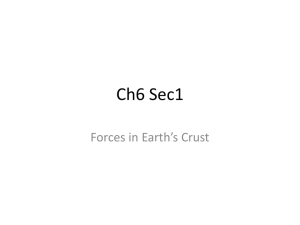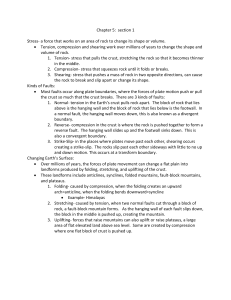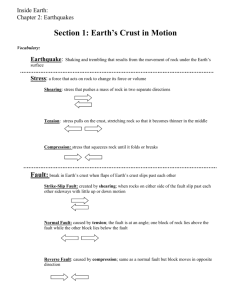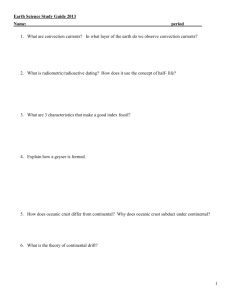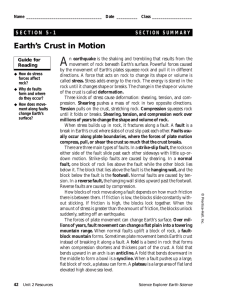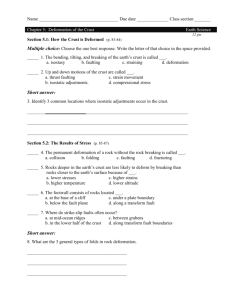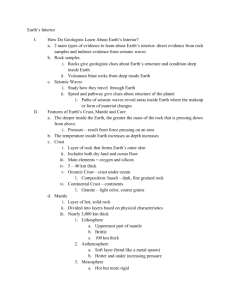Forces in Earth's Crust Study Guide
advertisement
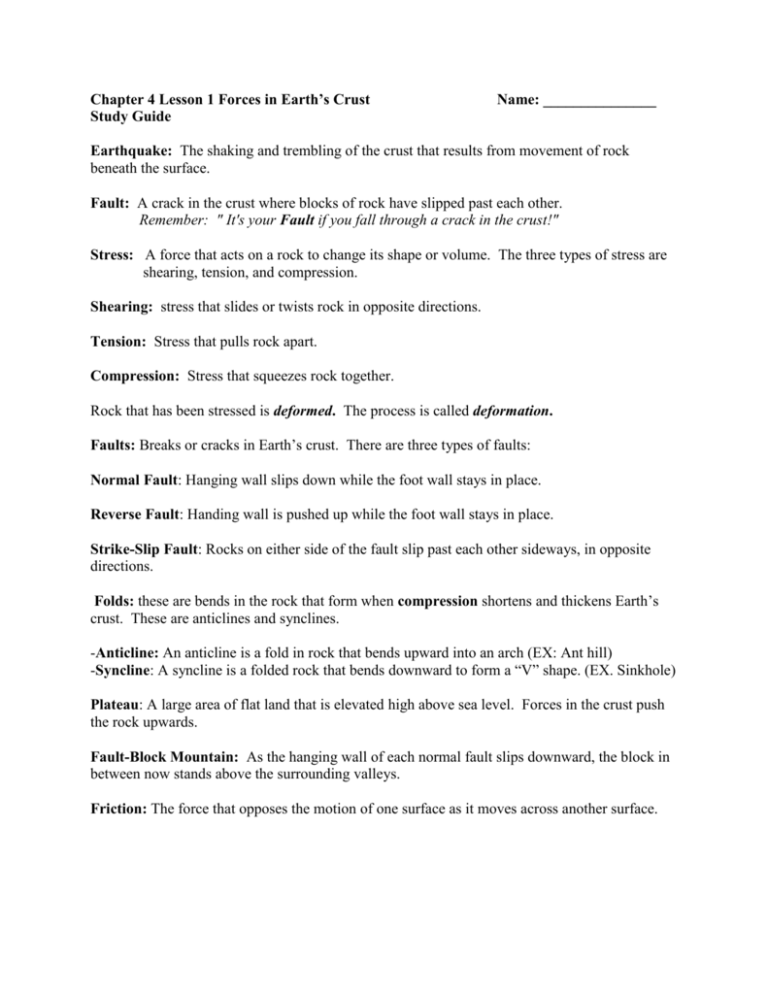
Chapter 4 Lesson 1 Forces in Earth’s Crust Study Guide Name: _______________ Earthquake: The shaking and trembling of the crust that results from movement of rock beneath the surface. Fault: A crack in the crust where blocks of rock have slipped past each other. Remember: " It's your Fault if you fall through a crack in the crust!" Stress: A force that acts on a rock to change its shape or volume. The three types of stress are shearing, tension, and compression. Shearing: stress that slides or twists rock in opposite directions. Tension: Stress that pulls rock apart. Compression: Stress that squeezes rock together. Rock that has been stressed is deformed. The process is called deformation. Faults: Breaks or cracks in Earth’s crust. There are three types of faults: Normal Fault: Hanging wall slips down while the foot wall stays in place. Reverse Fault: Handing wall is pushed up while the foot wall stays in place. Strike-Slip Fault: Rocks on either side of the fault slip past each other sideways, in opposite directions. Folds: these are bends in the rock that form when compression shortens and thickens Earth’s crust. These are anticlines and synclines. -Anticline: An anticline is a fold in rock that bends upward into an arch (EX: Ant hill) -Syncline: A syncline is a folded rock that bends downward to form a “V” shape. (EX. Sinkhole) Plateau: A large area of flat land that is elevated high above sea level. Forces in the crust push the rock upwards. Fault-Block Mountain: As the hanging wall of each normal fault slips downward, the block in between now stands above the surrounding valleys. Friction: The force that opposes the motion of one surface as it moves across another surface.

